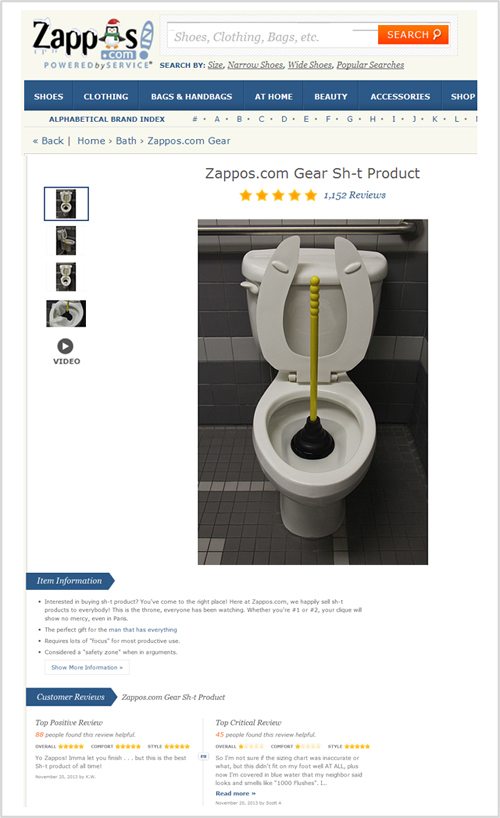Notice I said “levity,” not “funny” which is a much higher bar.
Still, it often takes guts as much as creativity to bring levity to a brand’s storytelling. And if you can tap into a recent happenstance, you’ve got the makings for a story to reach the masses.
I’ve come to call this “improv marketing” with one of the best-known examples being the Oreo tweet during the Super Bowl blackout.
![]()
It’s one thing to be nimble in serving up a clever tweet.
It’s another to create a mini campaign with levity in less than 48 hours to leverage a breaking news story. That’s exactly what Zappos pulled off after Kanye West’s beat down of Zappos CEO Tony Hseih during a podcast with author Brett Easton Ellis on Nov. 18. The next day E Online reported on West’s cathartic moment:
“I got into this giant argument with the head of Zappos that he’s trying to tell me what I need to focus on. Meanwhile, he sells all this s–t product to everybody, his whole thing is based off of selling s–t product,” West stated.
.
I think we all can agree this isn’t a key message for Zappos.
Twenty-four hours later, Zappos went live with a new product line inspired by Mr. West:

Put yourself in the shoes – cue the groan for the bad pun – of Zappos’ brand shepherds. They had two obvious choices:
- Do nothing: Name calling from Kayne West isn’t going to torpedo Cole Haan sales.
- Call some friendly journalists: Zappos and Tony Hseih could have made a withdrawl from the media karma bank, sharing their side of the story and perhaps offering West a “buy one pair of shoes, get a second pair of free of charge” coupon
Instead, they recognized that “improv marketing” could actually turn West’s harsh words in a brand-building exercise. And it took guts to execute on this campaign because any time you push the envelope, you are going to alienate a percent of people.
Like this guy/gal who counseled the Zappos CEO to grow up:

Imso A
from United States
“Get a life, Tony Hsieh. You’re the CEO of a huge company, it’s time to act like it. This is severely immature and I will be sure to never purchase anything from your company again.”
.
The campaign reflects the Zappos ethos – this is a company that calls out “create fun and a little weirdness” as a core value – so if some are turned off like “Imso A,” Zappos probably figures they’re not the target audience anyway.
Effective branding is often a polarizing force. It’s the dull middle you want to avoid.
And nothing cuts through dull like levity as demonstrated by the branding work from Zappos last week.



